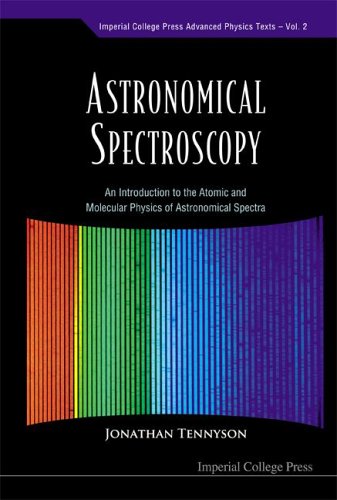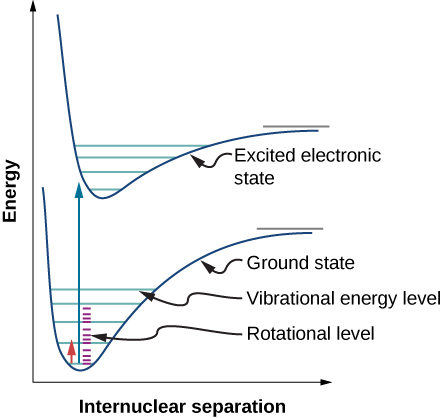Molecular Physics
with applications in
Astrochemistry
and
Mdelling of Plasma-Wall Interactions
Contraria non contradictoria sed complementa sunt.
The main current research I carry out is in the field of low-energy electron-molecule scattering theory. One of my challenge is the continuous improvement of the theory to obtain a better match with the spectroscopic data that will allow to predict accurate one. Lippmann–Schwinger equation is the main theory framework always need to improve its solution. Potential energy surfaces (PES) improvements is one of my goal. Based on accurate PES I can give a precise picture of dynamics. The theoretical investigations of collision badly needs accurate potential energy curves. Generally these curves are obtained by computational methods like Uk R-Matrix, where sometimes we have points vacancy. In this regard I'm interested in point fighting techniques. A vast number of collision processes can take place when an electron collides with a molecule, including non-rearrangement processes (for example, elastic scattering and excitation of electronic and/or nuclear states of the molecule) and rearrangement processes (for example, dissociative attachment, ionization and dielectronic recombination). The particular case of low energies offers the chance to focus mainly on the channels usually being closed. Having or calculating the spectroscopic data as PES, couplings and quantum defect I am able to give cross-sections and so thermal rates using Multichannel Quantum Defect Theory (MQDT). In this scattering picture, the collisions with molecular cations is what I am dealing with. In this scenario MQDT works fine and for low energies it includes wisely the two type of processes. The direct and indirect process. In the indirect one we deal with closed channels giving the Rydberg states. This approach allow me to give cross-section known for their graph shape having sharp pics. The electron colliding with the ion can be seen as the chemical reaction especially at low energies. Chemical reactions are likely to produce increasingly complex molecules. At low energy, it is possible to speak of the so-called elemental reactions between molecules and electrons or rather collisions which are:
- Dissociative recombination (DR), which can be schematically described
by
AB+( Ni ,v+i) + e- → A + B (1) - Scatter, which can be schematically described by
AB+(Ni,v+i) + e-(ε) → AB+(Ni,v+i)+ e- (ε′) (2) - Dissociative excitation (DE), which can be schematically described by
AB+(Ni,v+i) + e- → A + B+ + e- (3)
These reactions are the main core of my investigation. The most interesting and rich in physical processes is DR. DR was first found in connection with the Earths ionosphere, with photoionisation providing free electrons. This is considered a corner-stone reaction in the synthesis of interstellar molecules and plays an important role in the ionized layers of other planets, exoplanets and their satellites. In the modeling of the kinetics of cold dilute gases, the rotational distribution of molecular species is governed by competition between formation and destruction processes, absorption, fluorescence, radiative cascades, and low-energy collisions involving neutral and ionized atomic and molecular species as well as electrons. Rate coefficients for such elementary reactions are badly needed, in particular for the chemical models of the early Universe, interstellar media, and planetary atmospheres. A two step mechanism state behind DR. First, the electron is captured by the molecular by exciting an electron from one of the bound state. A neutral molecule is formed in an excited, usually strongly repulsive, double state located above the first ionization potential. Second, the molecule dissociates rapidly along the potential energy rejection curve. The scatter of the electron occurs with low probability due to rapid dissociation, which lowers the electronic energy below the first ionization limit. The molecule stabilizes electron capture by destroying itself.
The collision of molecules with electrons is sensitive on how the rotational quantum numbers {Ni, Nf} and vibrational quantum numbers {vi+, vf+} change from initial (i) to final (f) collision phase. These transitions are visible under Raman spectroscopy providing the structural fingerprint of interstellar media. Depending on the ratio of the quantities of the quantum numbers we can talk about inelastic collision (IC), elastic collision (EC) or superelastic collision (SEC), where the electron can gain energy, or it loses energy due to de-excitation or excitation of the molecule.
Rate coefficients, k, of processes like (1), (2), (3) enter in differential equation of concentration loss of molecular species AB+ in their kinetic processes,
|
d[AB+]
dt
= k[A][B]
| (4) |
The values of rate coefficients generally depend on temperature and in astrochemical compilations it is usual to express the dependence of each rate coefficient by stating the values of three parameters α, β and γ, where
| k(T )= α (T ∕300)β exp[γ∕T]. | (5) |


